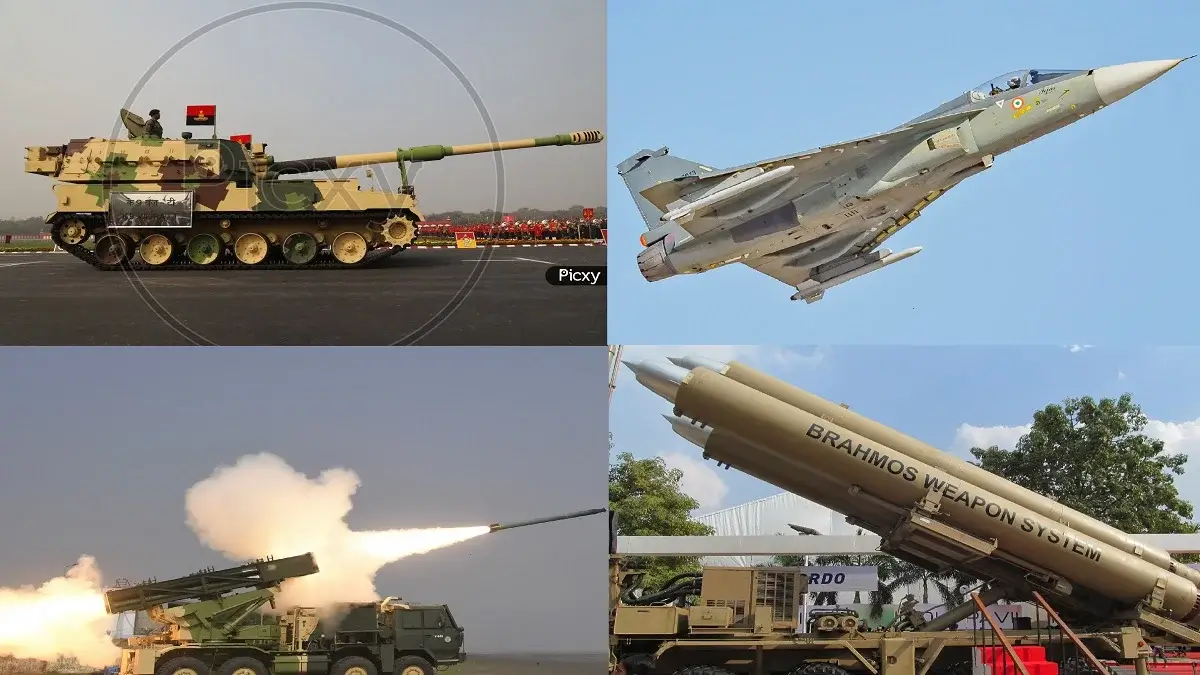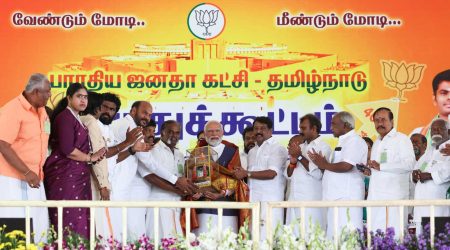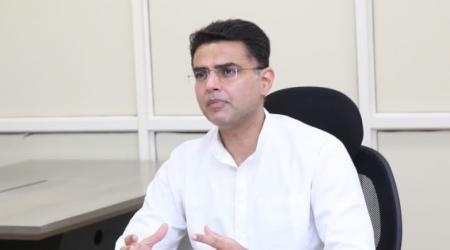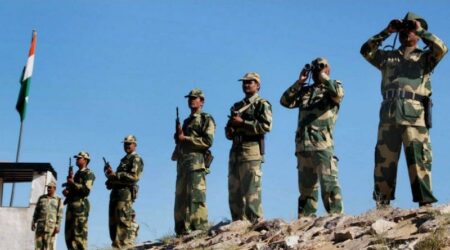Private sector leads the way with aerospace manufacturing
By Lt Gen Dalip Singh
India has been largely dependent upon foreign technology, equipment, and logistic support for its military hardware since independence. Situated in a tricky geopolitical arena, the defense of India also shaped its foreign policy for good, or bad. But India in the 21st century has begun to find its mojo in the international defense market thanks to the push by the Narendra Modi government.
In Sep 2017, Ordnance Factory Board (OFB) – the world’s largest government-operated production organization, secured its biggest export order from UAE for the supply of 40,000 numbers of 155 mm artillery shells for $42 million. In Aug 2019, OFB received a second order from UAE to supply another 50,000 artillery shells.
In early 2022, India signed a $375 million deal to export BrahMos supersonic cruise missiles to the Philippines. Talks are underway with Egypt, and Malaysia for the sale of 88 indigenously developed Light Combat Aircraft (LCA) Mark 1A. India is hopeful that a lot more weapons and platforms like LCH, Akaash air defense missiles, and Naval crafts will soon join the growing list of exportable weapon systems.
India has set a target of achieving a turnover of Rs1.75 lakh crore in aerospace, defense goods, and services by 2024, including exports worth Rs35000 crore for herself. India has always focused on partnerships, co-production, and technology transfer in its defense deals which has resulted in the capabilities and infrastructure which has become the foundation stone for the growing defense exports.
Defense Production in India
Defense of India was the biggest money guzzler Budget head for East India Company, and later for the British Crown as they did not want to lose the “crown jewel” at any cost. The first Ordnance Factory was installed during the British period at Cossipore in 1801 and by independence, India had 19 Ordnance Factories.
Though India became a factory to equip allied forces in both WW I & II for the supply of men, ammunition, and material, no serious efforts were made to establish the scientific industrial base, and engineering and industrial infrastructure in India by the British. “No argument is required to prove that for many decades to come, India will not be in a position to defend her against a military Power organized on modern lines,” KM Panikar wrote in 1946.
After Independence, India add a number of Ordnance Factories and Defense PSUs, and Defense Research and Development Organization (DRDO) was set up but the policies remained archaic and flat-footed, to say the least. No wonder, the outmoded Defense Industrial Base (DIB) failed to measure up to the modernization challenges of the forces, which acquired an ignominious distinction of being the leading importer of military hardware.
Though wide-ranging production facilities were established in 2001, private companies were also encouraged in defense-related production but strategic dove-tailing remained our Achilles heel. PM Modi, since 2014, has changed that approach and a slew of measures were initiated with positive intent and imaginative thinking.
Ø In July 2015, the government eased export regulations and stopped demanding multiple assurances on end-use from foreign governments even for the sale of components by Indian entities.
Ø The cap for Foreign Direct Investment (FDI) was raised from 26 to 49 percent under automatic route and to 100 percent through approval of the Ministry of Defense. In May 2020, the limit of FDI through the automatic route was raised to 74 percent. India raised only $0.08 million in 2014-15 and $2.18 million in 2018-19. Though the response from the industry was dismal, there is a long way to go once the policy is in place.
Ø A number of private enterprises have been given defense manufacturing licenses. Key players are Tata Defense Systems, Bharat Forge, Mahindra Defense Systems Ltd, Reliance Naval Shipyard in partnership with MDL, Kalyani Group, Larsen & Toubro, Tonbo Imaging, and SSS Defense.
Ø More than 460 licenses have so far been issued to private companies for the production of defense equipment.
Ø Under the “Aatmanirbhar Bharat” push, more than 180 contracts worth approximately $25.8 billion have been signed under the ‘Make in India’ scheme with the Indian industry between 2014-2019,
Ø Under the ‘Make in India’ scheme, Make-I projects with 90 percent government-funded implemented through the vendor, Make-II – prototype development of equipment/system/ platform or their upgrades with no government funding, and Make-III – a collaboration with the foreign equipment manufacturer for production in India has been listed.
Ø In September 2019, DRDO formulated the “DRDO Policy and Procedures for Transfer of Technology” and released information on “DRDO-Industry Partnership: Synergy and Growth and DRDO Products with Potential for Export”.
Ø In August 2020, the MoD announced that India would stop the import of 101 weapons and military platforms. In April 2021, 351 more items were added to the list.
Ø The ‘Defense Production & Export Promotion Policy (DPEPP) 2020’ was launched as an overarching guiding document aimed at self-reliance and exports.
Ø In September 2021, the Ordnance Factory Board (OFB) comprising 41 Ordnance factories has been re-organized into seven DPSUs namely Munitions India Limited (MIL), Armored Vehicles Nigam Limited (AVANI), Advanced Weapons and Equipment India Limited (AWE), Troop Comforts Limited (TCL), Yantra India Limited (YIL), India Optel Limited (IOL) and Gliders India Limited (GIL). Henceforth, they would enjoy a greater degree of autonomy in their functioning and explore untapped opportunities though this will also mean greater challenges that a domesticated being would face in the wilderness.
Defense Production in India
Overall production of military hardware in India is around Rs80000 crore and the share of the Private Sector has steadily grown over the years. But on the flip side, production by 41 Ordnance Factories – now converted into seven DPSUs – has remained stagnant, or shrinking.
One possible reason for the trends may be the delegation of financial powers of up to Rs500 crore to the forces without the consultation of the ministry. Three arms of Indian defense forces now prioritize their requirements and are no longer willing to squander their limited budget on non-critical procurements. Interestingly, this has led to reduced orders for the Ordnance factories as armed forces used Emergency Procurement Powers (EPP) to procure vital needs and plug critical operational voids largely through imports.
Affordability, quality, and sustainability are three criteria for the success of any venture including defense production. Seven defense PSUs and their products are comfortably placed in terms of affordability but the other two metrics remain a cause of concern. The quality issues faced by Forces – the primary clients, especially in the field of ammunition supplied by Ordnance Factories are not easy to be brushed aside.
The Corporatization of the Ordnance Factories will also need to negotiate critical challenges on the home turf as the Indian Forces were their captive buyers earlier. While the preferential treatment to new DPSUs may continue, bureaucratic and procedural delays in the placement of regular orders by the Forces may prove to be a big hurdle, unless streamlined. Moreover, DPSU may also face some tough market competition to keep their orders intact and in this, they may face their Waterloo.
The world is definitely taking note of positive intent and some success stories emanating from India. Green shoots are visible, and there is a glimmer of hope, but many more challenges are still ahead.
INSERT TABLE: Defense Export from India since 2014
| Year | Value of Export (In Crore Rupees) |
| 2014-15 | 1941 |
| 2015-16 | 2059 |
| 2016-17 | 1522 |
| 2017-18 | 4682 |
| 2018-19 | 10746 |
| 2019-20 | 9116 |
| 2020-21 | 8435 |
| 2021-22 | 13000 |

(Lt. Gen Dalip Singh, PVSM, VSM retired from the Indian Army after 39 years of service. He held important posts such as Director-General – Recruiting, and Director General Ordnance Services in his distinguished career as a soldier.)
==
Disclaimer: The views expressed are not necessarily those of The South Asian Times











